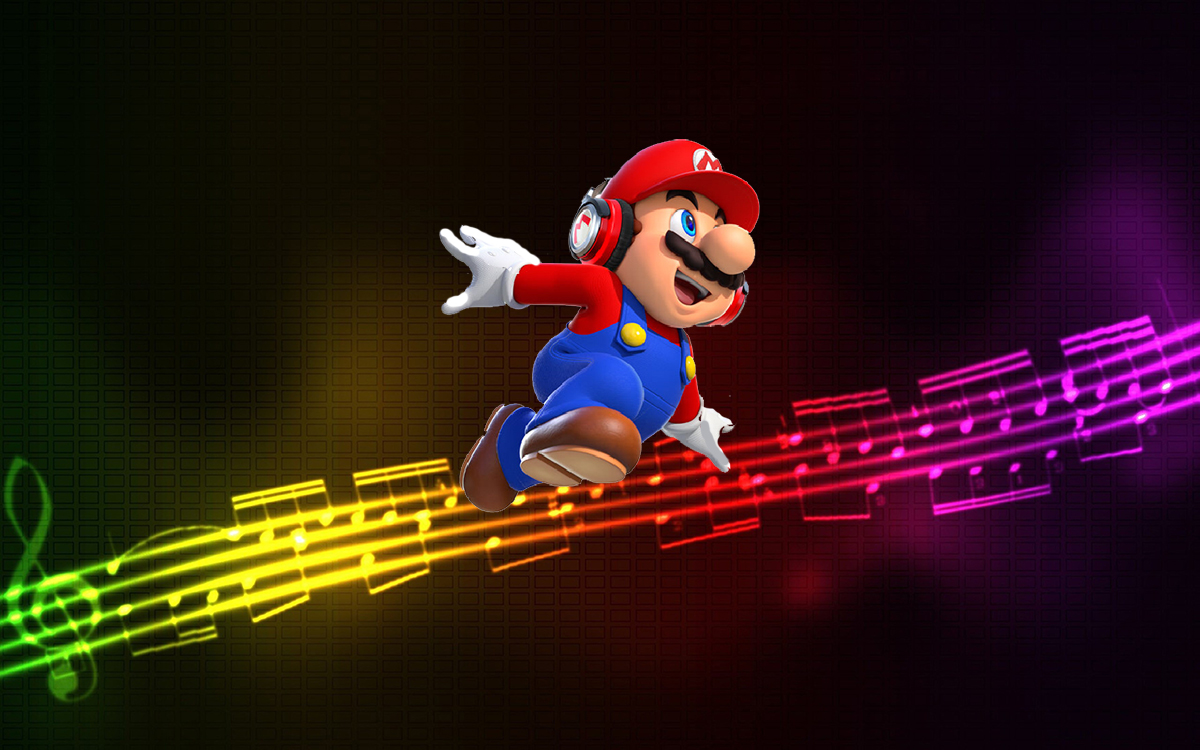No matter where you’re from or how old you are, you know who Super Mario is. If you’ve played a Super Mario video game, chances are you don’t even need the visuals to know what it is. The music alone can evoke the very idea of the character and the world in which the games take place. If you ask a random person on the street to hum some Mario music, they’ll likely sing the overworld music from the classic NES game. You may not realize it, but the music from this particular franchise is embedded in our brains for good reason.
What makes the music so distinctive and fun actually has a lot to do with the same reasons why the games are so fun to play. Accessibility.
Just as you don’t have to be a hardcore gamer to pick up Super Mario and have fun, you don’t need a degree in music theory to sing along with the music. Most of, if not all music featured throughout the Super Mario franchise is comprised of strong melodies using basic major chord tones. The root, 3rd, and the 5th of a chord are the easiest to sing along to and most importantly, the most pleasing to the ear. Before getting into the technical aspects of the music, let’s take a look at the leitmotif.
A leitmotif is a musical gesture in a composition that’s associated with a particular person or idea. When the character or situation is first introduced, so is the leitmotif. The two are presented several times so the audience can associate the character with the music. Each Super Mario level uses this technique as a hook to draw the player in. Take a listen to the intro in “Bob-Omb Battlefield” from Super Mario 64 for example. Not only does it set the mood, but it introduces the overall motif of the level or entire game.

To say the leitmotifs used in the Super Mario franchise are successful, would be an understatement.
Outside the intros, the compositions of the Super Mario franchise are still pretty catchy on their own. Going back to the overworld theme in the first game, the main riff is a simple C-F-C-F-Am-G7. All the notes in the melody never stray too far from their root chord, but here the rhythm does all the heavy lifting. Triplet notes, off-beats, and the swing-style drum pattern keep the melody from being anything but simple. By displacing each note on a weaker beat, it gives the song a New Orleans ragtime vibe.

The sheet music for this song looks like the level layout on the game itself!
In the game, Mario runs, jumps over holes, and stomps enemies with the greatest of ease and the music reflects that.
It’s not all coin blocks and 1-ups in the Mushroom Kingdom though. As gamers progress, they find themselves in plenty of life-threatening danger. Just like the level design, even the happiest of compositions feature mode mixtures, also called modal interchanges. A modal interchange is where a chord is borrowed from a parallel key to heighten tension without sacrificing the integrity of the theme. It challenges the listener and keeps it from becoming repetitive at the same time adding color to the composition before starting over. While the mode mixtures take a darker or more serious tone, it doesn’t hang around long enough to change the overall punchy nature of the song. My favorite example of this is in the 0:23 mark of “Delfino Plaza” from Super Mario Sunshine.

Adding a discord note that doesn’t belong in the scale and immediately resolving it by going back to the next proper note is ingenious! These little tricks show the composition isn’t taking itself too seriously. The music feels good to the human ear much like how it feels good to control Mario on the screen. You want to hear the music in the same way you want to play.
It’s that feel good aspect where the magic of the Super Mario franchise stems from both figuratively and actually.
The character of Mario himself is always setting out to save the day despite being underpowered and facing uncertainty. He’s like a cross between Superman and Mickey Mouse. While Mario is not afraid of danger, it doesn’t mean he’s exempt from peril. There’s something innocent and timeless about the character and I think it goes beyond gameplay. Perhaps it’s that constant push to be the hero despite the odds is what draws us to the games? Maybe they’re just fun? No matter what the reason, I can’t think of any aspect of the franchise without the soundtrack.


